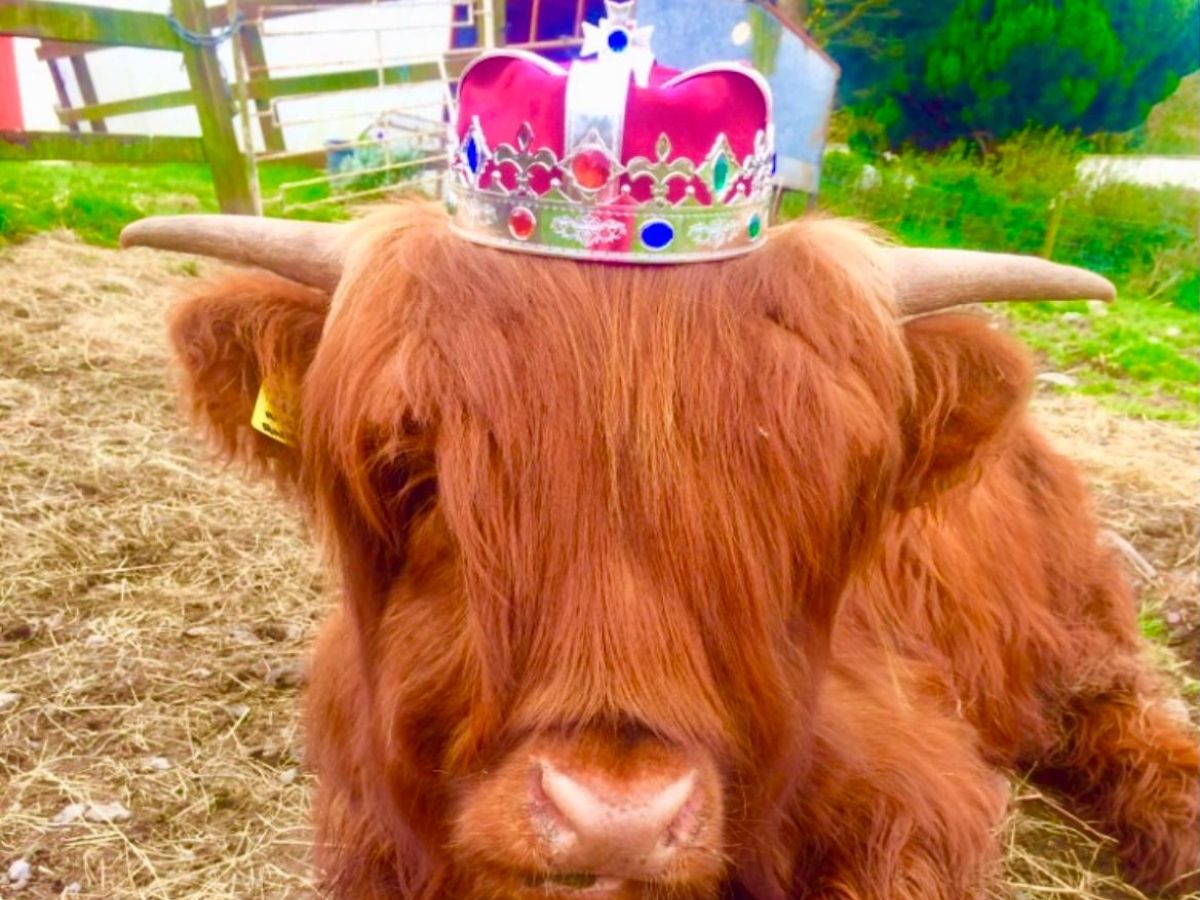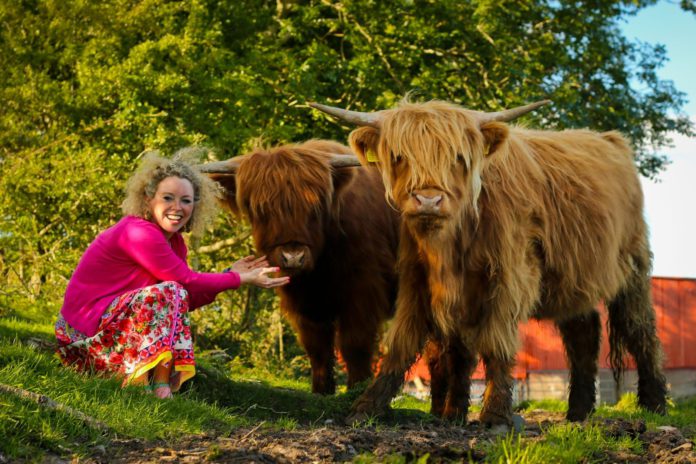In this article, That’s Farming speak to renowned Highland cattle breeder, Michelle Shaughnessy, who outlines the step-by-step process of importing cattle into Ireland post-Brexit.
On Friday morning last, as word broke of the death of The Duke of Edinburgh, Prince Philip, a cattle lorry destined for County Longford in the Republic of Ireland was on its way to Prince Philip’s favourite country home, Balmoral Castle in the Scottish Highlands to haul a load of Balmoral-bred Scottish Highland cattle, bred by HRM, Queen Elizabeth and the Duke of Edinburgh.
Michelle Shaughnessy, a well-known Co Longford breeder of her beloved Highland Cattle, had struck up a friendship some years ago with the Queen’s senior stock master, Dochy Ormiston.
Dochy, a renowned highland show judge, who lives in Balmoral Castle, oversees the Queen’s and Duke’s beloved cattle. The Queen is the patron of the Highland Cattle Society.
He had carefully hand-selected some top-quality heifers and a Highland show champion bull to send across to Ireland to breed with Michelle’s bulls that she bred in recent years. These include Black Prince Harold of Graffogue, Red Prince Howard of Graffogue, Black Prince Herbert of Graffogue and Red Prince Humphrey of her Graffogue fold.

A dream come true
Speaking to That’s Farming, Shaughnessy said: “To have the opportunity to even look at Balmoral stock on a previous trip to the castle was a total privilege.”
“To be given the opportunity of buying Balmoral stock, with the help of Dochy Ormiston was out of the question. To witness the arrival of Balmoral stock on Irish soil was just a farfetched dream come true.”
For Michelle, the Duke’s death announcement brought with it another step in the “somewhat complex and ardours” process of importing her beloved cattle from Scotland to Irish soil as the media and security descended around the lorry destined for Ireland last Friday.

Why does Shaughnessy import from Scotland?
“I have been purchasing cattle in Scotland for the past number of years as, quite frankly, Highland cattle are a rare breed in both Scotland and certainly in Ireland,” Michelle commented.
“Most importantly, many of the cattle bred in Ireland are not registered, or they are bred off non-registered bulls.” the Highland breeder added.
“If you breed off a non-DNA-reg bull, you cannot register the calves as pedigree. If you breed of a pedigree registered bull and non-reg cow, there may be an appendix B route, but again these are deemed non-pedigree within the society.”
“Buying from renowned breeders in Scotland removes all this noise. Plus, you get top quality bloodlines and all the registered pedigree papers that should accompany these beautiful cattle.”

Importing cattle to Ireland post-Brexit
The process of importing cattle from the UK to Ireland post-Brexit has brought “some amount of heartache” for Michelle.
She said there is “so much red tape now” since Brexit, but that will not deter her from acquiring stock from Scotland, as she cited the dedicated help and expertise of Andrew and Aileen Ewing, Haulage, in Dumbretton Farm, Scotland.
Originally from Northern Ireland, the Ewings have been importing and exporting livestock to and from the EU for the past 25 years since moving to Scotland.

According to the Longford native, the importation process is “complex” and strictly regulated by customs, veterinary inspectors and regulators and include:
- All cattle must be TB tested 30 days before export;
- Secondly, all cattle must be health checked and certified by a veterinary inspector within 48 hours before export to ensure all are healthy and well to travel;
- Also, all cattle now need to have a GB ear tag attached to them to signify the cattle originated from GB, i.e., a Non-Euro country;
- Journey logs, common health entry documents and entries on the trader support service need to be completed and pre-cleared before departure.
Other items to look out for:
- If you purchase cattle at a public mart in GB, these cattle need to stand still for 40 days before you can export to Ireland;
- Calves at foot must be 14-days-old to travel, and again, Ewings Haulage will keep the cow and calf safe in a separate deck from larger animals;
- If you bring your beloved show cow/bull from Ireland to a show in Scotland, you now, post-Brexit, cannot bring that animal home for six months; it must standstill for six months before moving them home.
On arrival into Ireland:
Landing must take place at the port of Larne, and her haulier, Andrew Ewing, must report immediately following disembarkation to a portal inspector and must co-operate with DAERA staff as required.
Animals may not leave the port until a portal inspector has authorised such departure.
All cattle arriving in the Republic of Ireland will trigger an alert with the Department of Agriculture, Food and the Marine that your herd has had an import at Larne.
“I always like to courtesy contact the DAFM in advance of import. Your local dept inspector will automatically contact you immediately post-import to complete the post-arrival steps into Ireland.”

According to Michelle, these include:
- All cattle must be isolated and TB tested. The department inspector must complete health blood tests;
- All cattle moving from GB to Northern/ Republic of Ireland, post-Brexit, unfortunately now must be re-tagged with a new UK ear tag under the DAFM inspector’s supervision;
- All import paperwork and passports are handed to the DAFM inspector, who will return your red passport (not the traditional blue) within approximately two weeks;
- Post-January 1st, 2021, no animal born before March 15th, 2013, can be exported from GB to Europe, including Northern Ireland;
- All female calves now need to be DNA tested and sent to the Highland Cattle Society to verify their Pedigree within the labs; there is no DNA fee for the females, unlike the males;
- All male calves can be birth notified registered (this is not a pedigree certification) and can only be Pedigree DNA’d once they reach 14 months of age. DNA/Breed standard certification and examination costs do apply for the Bulls registration:
- Michelle, a member of the Highland Cattle Society, currently has an open query with the Highland Society regarding what herd book new Irish born calves will now form part of post-Brexit now that Scotland is no longer part of the EU.

‘A dream to own and love’
“While the process appears complex and ardourous, and it certainly is, my expert hauliers, Andrew and Aileen, take the hassle out of exporting and importing both for the buyer and the seller. The rules and regulations can be a bit daunting for some people and thus can be off-putting to those who are buying or selling their stock abroad.”
“Dumbretton Farm is an approved Ministry Assembly Centre and Control Post. This means that the stock can be brought to their premises, and their veterinary inspector carries out all the paperwork and checks for exports, thus making life a whole lot easier for everyone concerned.”
“The welfare of the animals is our utmost concern. The livestock are rested at their assembly centre before they continue their journey to their destination, thus causing the animals as little stress as possible and making their journey as short as possible.”
“Both Andrew Senior and Andrew Junior have Class 1 HGV licences and Certificates of Competence in livestock transportation both in Britain and Ireland. They are well versed in what is required of them to make the whole process go as smoothly as possible.”
“I am always happy to help potential buyers with any questions concerning pedigree breeding, bloodlines and the registration process involved. These somewhat ‘difficult to source cattle’ are a dream to own and love; I simply adore them.” the Highland cattle breeder concluded.
To share your story, email – [email protected]





